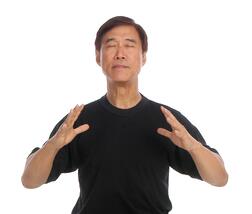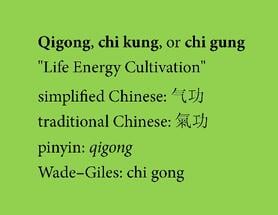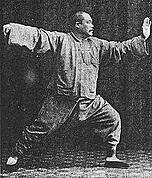Qi stagnation is a common diagnosis in any modern clinic, with the stressors of daily life making us all a little more stressed, achy from hour-long commutes, and irritable to be around.

An easy way to visually think of qi stagnation, is as the movement of water in a stream. If you think of a stream that stops flowing or of an eddy, the water might start to get cloudy. It might smell a little muddled - that “old water smell.” Algae might grow more abundantly. Sticks and litter may collect there. When you have a stream that is full and moving continuously, there’s no time for the water to get cloudy. Any disturbances from hiking through or an animal digging something up, will be easily be carried downriver.
"Exercise gives you endorphins. Endorphins make you happy." (Legally Blonde)

Qi stagnation can manifest both emotionally and physically. Emotionally, people may feel like there are emotions stuck that they are unable or unwilling to express. Ever feel like you are wound up, or bottling emotions up? Then you already know what Liver qi stagnation feels like.
Physically, a common way qi stagnation can show up as pain. A classic Chinese saying is:
“Where there is free flow there is no pain. Where there is pain there is no free flow.”
While it might not be pleasant to start moving your body in ways it’s not used to, it’s often a sign of your body waking up. Pay attention to where things are creaky and achy. That might be ok and get better with more use (think of it as WD-40-ing your joints). Sharp pain? Probably your body telling you to back off (and to consult with a practitioner!).
Ease back into movement with light exercises or stretches. Yoga, qigong, taiji, swimming at the greenbelt, and walks are all ways to invite movement back into your life if you are feeling ready. Hate lifting weights? Then that gym membership is probably not for you. Choose something you love and you will want to do it more often. Start moving that qi and both your mind and body will thank you.
Need some inspiration?
- We have free mindbody classes on campus during every quarter - qigong and yoga this coming term.
- Set an alarm on your phone to take a walk around the block every hour or so. If you are a student, go with friends over break.
- Take your pup for an early morning or bedtime walk (make sure the pavement is cool enough by walking around barefoot yourself and that it’s below 90 degrees).
- South Austin Roller Rink has $7 adult skate night on Sundays and Wednesday, skate rental included! DJ and some fantastic people watching to be had.
- Stretch on breaks! @joetherpy is one of my favorite resources.
- Barton Springs Pool is free to the public before 8 AM and after 9 PM, and a great way to beat the summer heat.
- Reminder: many yoga studios are donation based - I have had some tough financial weeks and given $4 for a class. The only person who felt awkward was me.
- Yoga-Yoga offers a 20% discount for AOMA employees and students.
- If you are more of a homebody yogi, the youtube channel Yoga with Adriene (an Austinite!) is fantastic and hilarious.
- The FITT Finder app is a local startup that shows you free fitness classes all around Austin.


 The word Qigong (chi kung or chi gung) is made up of two Chinese words. Qi (pronounced chee) is usually translated to mean the life force or vital-energy that flows through all things in the universe. The second word, Gong (pronounced gung) means work or cultivation. Together, Qigong means life energy cultivation.
The word Qigong (chi kung or chi gung) is made up of two Chinese words. Qi (pronounced chee) is usually translated to mean the life force or vital-energy that flows through all things in the universe. The second word, Gong (pronounced gung) means work or cultivation. Together, Qigong means life energy cultivation. What is Tai Chi?
What is Tai Chi?
